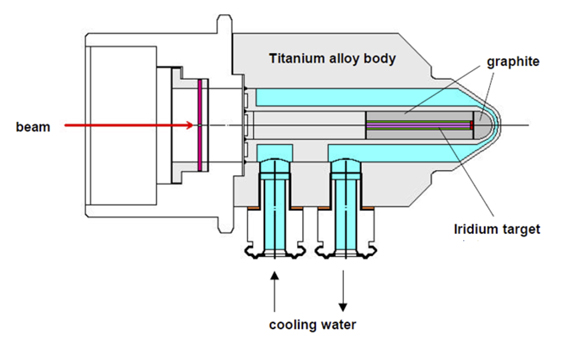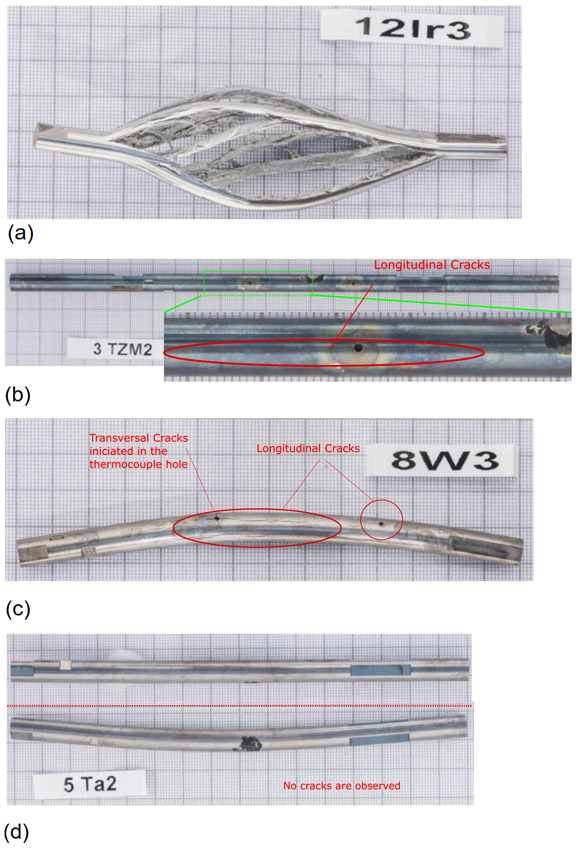Refractory metals for particle producing targets at CERN
December 20, 2017
Intense and high-energy proton beams are impacted onto fixed targets made of refractory metals to produce secondary beams across the CERN accelerator complex. The interaction of a proton beam with the atoms and nuclei of these target materials produces extremely high and fast depositions of energy with a subsequent rapid rise of temperature, thermal and mechanical load.
In a paper presented at the 2017 Plansee Seminar, held in Reutte, Austria, May 29-June 2, 2017, Claudio Torregrosa and colleagues of the Engineering (EN) Department, Sources Targets and Interactions (STI) Group at the CERN accelerator complex in Geneva, Switzerland, reported on the upgrades to existing target facilities underway at CERN, as well as the design of new target devices using refractory metals.
Torregrosa stated that the design of new target devices will require significant R&D activities on the behaviour of the different refractory metals of interest exposed to realistic material operational conditions. The target devices include the Antiproton Decelerator Target (AD-Target), the Beam Dump Facility (BDF) and the n_TOF neutron production spallation target facility. The authors stated that the AD-Target is the only antiproton production target currently in operation in the world.

Fig. 1 Schematic of the water-cooled antiproton design used from 1987 to the present day. The target core on which the primary proton beam is impacted is a 3 mm diameter rod, 55 mm length, made of iridium (From paper by C Torregrosa, et al., as published in the Proceedings of the 19th Plansee Seminar)
Its current design, shown in Fig. 1, dates from the late 1980s and consists of a water-cooled Ti-alloy (grade 5) assembly. Inside this assembly, a graphite matrix contains the target core, which comprises a 3 mm diameter, 55 mm length iridium rod. A new design of the target is being pursued at CERN for future operations which, among other changes, may include the selection of a different target core material and geometry configuration.
Antiproton production is said to require a very compact target in order to be as close as possible to a punctual source and to reduce antiproton reabsorption in the material surrounding the core. Iridium is the current core material as it is the second most stable and densest element, although other refractory metals such as tantalum are strong candidates in the new design. The potential material should be as dense as possible, have a very high melting point (above 2000°C) and possess a high resistance to tensile pressures and spalling, even at high temperatures.
Fig. 2 shows the results of some refractory metals (Ir, TZM, W and Ta) exposed to direct impact of proton beams during the HRMT27 experiment. All the targets except Ta showed a high degree of internal and external cracking.
The Beam Dump Facility target is a production target for the Search of Hidden Particles (SHiP) experiment currently in the design phase. The proposed target core design comprises several blocks of pure tungsten and TZM (an Mo alloy containing 0.5% Ti, 0.08% Zr, 0.02% C) having a square cross-section of 30 x 30 cm2 and variable thicknesses, for a total effective target length of around 130 cm (Fig. 3). TZM is chosen because of its higher strength, better creep resistance and higher recrystallisation temperature compared to pure Mo.

Fig. 2 Effect of some refractory metals exposed to direct impact of proton beams during the HRMT27 experiment. (a) Iridium (b) TZM (c) tungsten (d) tantalum. All the targets except Ta present a leigh degree of internal and external cracking (From paper by C Torregrosa, et al., as published in the Proceedings of the 19th Plansee Seminar)
Due to the high temperatures generated by the beam power delivered on the target, a high-speed water-cooling system flowing around the TZM and W blocks is foreseen in the design. However, the high-speed water in contact with the pure tungsten and TZM blocks could induce undesired corrosion-erosion effects, and the target core blocks are therefore clad with Ta and Ta-W alloys using Hot Isostatic Pressing (HIP). Ta and Ta-W alloys were selected as the cladding material due to its high corrosion resistance and its convenience as high-Z material with short interaction length.
The current n_TOF facility consists of a proton-driven pulsed neutron source, coupled to two flight paths; Experimental Area 1 and 2, respectively 200 m (EAR1) and 20 m (EAR2) long. The facility is designed to study neutron-nucleus interactions for neutron kinetic energies ranging from a few meV to several GeV, determined by time-of-flight (hence the name n_TOF). The conducted studies are important in many research fields (astrophysics, nuclear research and technology, accelerator driven systems, etc).
The current target comprises a water-cooled lead cylinder (Ø 60 cm x 40 cm) presently subject to erosion/corrosion phenomena and contamination of its water circuit with spallation products. In addition, in order to avoid water boiling, the average proton beam intensity on the target has been limited.
The existing n_TOF facility will undergo an important consolidation during the CERN Long Shutdown 2 (LS2). One of the possible new target envisaged consists of a HIPed Ta-clad tungsten core in a massive lead block. The new target is expected to improve reliability, avoid the above mentioned issues, and optimise physics performance for both experimental areas.
The Ta-W core would be placed directly on the beam axis, undertaking the most critical part of the beam load due to its better thermomechanical behaviour, while the lead enclosure would have to be subject only to the remaining energy. In addition, a more efficient cooling can be obtained on the inner W core thanks to the use of HIPing to create a better thermal conductance at the interface between Ta and W.
The above article was originally published in PM Review magazine, Winter 2017, from the paper published in the Proceedings of the 19th Plansee Seminar, International Conference on Refractory Metals and Hard Materials, May 29-June 2, 2017.une 2, 2017.















